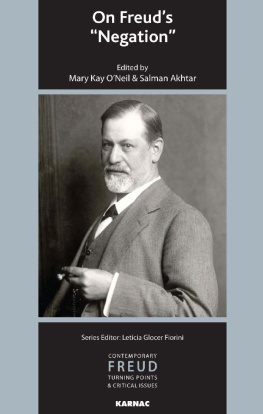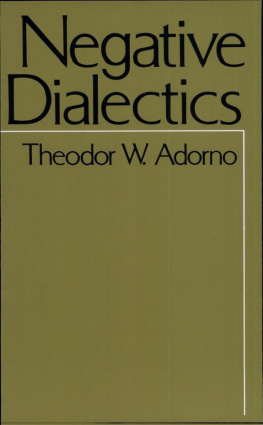Andre Halaw - Neti-Neti Meditation: Transcendence Through Negation
Here you can read online Andre Halaw - Neti-Neti Meditation: Transcendence Through Negation full text of the book (entire story) in english for free. Download pdf and epub, get meaning, cover and reviews about this ebook. year: 2013, publisher: Createspace Independent Pub, genre: Religion. Description of the work, (preface) as well as reviews are available. Best literature library LitArk.com created for fans of good reading and offers a wide selection of genres:
Romance novel
Science fiction
Adventure
Detective
Science
History
Home and family
Prose
Art
Politics
Computer
Non-fiction
Religion
Business
Children
Humor
Choose a favorite category and find really read worthwhile books. Enjoy immersion in the world of imagination, feel the emotions of the characters or learn something new for yourself, make an fascinating discovery.

- Book:Neti-Neti Meditation: Transcendence Through Negation
- Author:
- Publisher:Createspace Independent Pub
- Genre:
- Year:2013
- Rating:4 / 5
- Favourites:Add to favourites
- Your mark:
- 80
- 1
- 2
- 3
- 4
- 5
Neti-Neti Meditation: Transcendence Through Negation: summary, description and annotation
We offer to read an annotation, description, summary or preface (depends on what the author of the book "Neti-Neti Meditation: Transcendence Through Negation" wrote himself). If you haven't found the necessary information about the book — write in the comments, we will try to find it.
Neti-Neti Meditation: Transcendence Through Negation — read online for free the complete book (whole text) full work
Below is the text of the book, divided by pages. System saving the place of the last page read, allows you to conveniently read the book "Neti-Neti Meditation: Transcendence Through Negation" online for free, without having to search again every time where you left off. Put a bookmark, and you can go to the page where you finished reading at any time.
Font size:
Interval:
Bookmark:
Neti-Neti Meditation
Andre Halaw
Cover Photo, House of Knowledge Variation1
by Adrien Sifre , is licensed under CC BY-NC-ND 2.0 .
Cover Design by Andre Halaw
Copyright Andre Halaw 2015
This book is dedicated to the loving memory of Erika and Henry Sussmilch.
I love and miss you, Mama and Papa.
By such sentences as That thou art, our own Self is affirmed. Of that which is untrue and composed of the five elements, the scriptures say, Not this, not that.
Avadhuta Gita 1.25
Form, O monks, is not-self; if form were self, then form would not lead to affliction Feeling, O monks, is not self...Perception, O monks, is not-self...Mental formations, O monks, are not-self Consciousness, O monks, is not-self... all those [just mentioned] must be regarded with proper wisdom, according to reality, thus: These are not mine, this I am not, this is not my self.
Anattalakkhana Sutta
There is that sphere where there is no earth, no fire nor wind; no sphere of infinity of space, of infinity of consciousness, of nothingness or even of neither-perception-nor-nonperception; there, there is neither this world nor the other world, neither moon nor sun; this sphere I call neither a coming nor a going nor a staying still, neither a dying nor a reappearance; it has no basis, no evolution and no support; this just this, is the end of suffering.
Udana 8.1
Introduction
This book operates under one basic assumption: you are not your personality, thoughts, feelings, emotions, memories, body, sensations, perceptions, will, or anything else that you have come to identify yourself as, such as your gender, sexual orientation, job, your role as a parent, child, or sibling.
Most of the time we think of our inner self as a camera that leads our bodies around, our lives as personal and private experiences. For instance, when I am driving my car, no one else is present in my head sharing my experience with me. Similarly, while I am driving, I am not in the gym. I, like all other tangible objects, have a definite locationhere. This, however, is a very limited view.
In reality, we are vast, empty, and attributeless, what sages call noumenon or the Absolute. Our true nature, unlike in the car and gym examples above, transcends location in space and time. It is the Nothingness that precedes, and allows for, all of beingthe unmanifest basis upon which all of reality is predicated.
To borrow from the Upanishads , You are That, the completely indescribable Absolute that defies all definitions and limitations. Hows that for good news?
To help us make sense of this, let us imagine that reality operates on three levels. The first two compose the manifest realm (in the form of matter and other observable phenomena); the third, the unmanifest.
- The first or relative level is in the realm of manifest phenomena. This conventional, everyday level of duality is where you, I, and all other things are separate. Here, a diamond is more valuable than glass and calculus is more sophisticated than finger painting. The relative level, as we shall soon see, is governed entirely by concepts.
- The second level is manifest reality prior to conceptualization. Here, the world is one seamless whole. This is commonly called nonduality , Thusness , or Suchness .
- Lastly and most fundamentally, there is the unmanifest Absolute . On this level, there are no phenomena whatsoever, not even in a nondual sense.
As you read the book, it is important always to remember that the entire Neti-Neti process aims at awakening us to the Absolute. Anything short of that is simply a layover on a still longer journey. Even nondual Suchness is incomplete.
To assign any qualities to the Absolute is to invite confusion because it transcends all concepts. In fact, its safe to say that whatever you conceive it to be, it isnt , for ideas apply only to the relative level. The Absolute is completely unmanifest, which means that it cannot be seen, touched, tasted, heard, and so on.
Beyond form and even awareness, the Absolute completely evades all words and designations. Unconditioned, deathless, formless, unborn, Nirvana, Moksha, Tao, these are all pointers to your true nature. The same nature that all beings and all of existence shares.
Far from being a remote or esoteric principle realized only after years of intense yoga, the Absolute serves as the backdrop for all of your personal experiences and the very basis for the entire universe. It is always present; we just dont realize it because we are fixated on objects and concepts. Understood in this way, the Absolute is not separate from the world of matter. It is the fecund formlessness from which all of manifest reality originates.
In a sense, we can think of form as dense Nothingnessthe manifest as the appearance of the Unmanifest.
That is your original nature.
We suffer because, like the limitless sky confusing itself with the transient clouds, we mistakenly believe that we are our thoughts, emotions, and personalities; when in fact, we are none of those things. We are trapped in the manifest realmeither on the relative, conceptual level; or if we are lucky, we might see through the conceptual haze and awaken to the nondual whole.
But who we truly are is utterly unconditioned and unmanifest.
Neti-Neti brings us back home to the Absolute by peeling away all of those layers that we ordinarily misidentify ourselves with. The process is based upon the ancient Hindu and Buddhist technique , which means, Not this, not that. For as the 20th-century Indian sage Sri Nisargadatta Maharaj taught, In order to discover what you are, you must find out what you are not.
Neti-Neti trains us to look beyond our minds, bodies, gender, culture, relationshipsin short, everything that we normally take ourselves to beand recognize that none of these things is us. For this reason, this is not the kind of book that you can casually read once and then return to the bookshelf. In order to wake up, you need to internalize the process and put Neti-Neti to practice.
We are not our senses, perceptions, awareness, consciousness, emotions, bodies, thoughts. These are all brief appearances, manifestations, upon our true nature, the Unmanifest. They must all be negated and eventually transcended until only the Absolute remains.
Then we can re-embrace the world and all the aspects of ourselves that we previously negated. For when we realize that the entire universe is actually an expression of the unmanifest, we are free to dance and play as we like.
Chapter 1
The Myth of I
Here comes the most difficult fact for anyone to accept: there is no you. What we all mistakenly call I is simply just the sense of continuity created by our nervous system, along with a complex story attached to it. We assume that there is some I who hears and sees and smells and thinks, but actually we have it backwards.
Seeing and hearing and thinking create the appearance of a continuous, solid subject, which we call a person. In actuality, this I that we think we are is a series of mental, sensory, physical, emotional, and perceptual impressions. When we string them together, they create the sense of continuity.
But there is none.
We reinforce this sense of continuity with a fabricated narrative that we consider our personality. It is no exaggeration to say that our personal identities are the most complicated and compelling fictional characters ever. They are so convincing that we believe they are real. Talk about hoodwinked.
Actually, there is no I. It is a mental construct that operates entirely on the relative level of reality. Its purpose is to promote survival and success; however, the I is also the primary source of human suffering. Ambition, greed, resentment, anger, jealousy, envy, rage, all originate from the belief in this false master called I.
Next pageFont size:
Interval:
Bookmark:
Similar books «Neti-Neti Meditation: Transcendence Through Negation»
Look at similar books to Neti-Neti Meditation: Transcendence Through Negation. We have selected literature similar in name and meaning in the hope of providing readers with more options to find new, interesting, not yet read works.
Discussion, reviews of the book Neti-Neti Meditation: Transcendence Through Negation and just readers' own opinions. Leave your comments, write what you think about the work, its meaning or the main characters. Specify what exactly you liked and what you didn't like, and why you think so.






